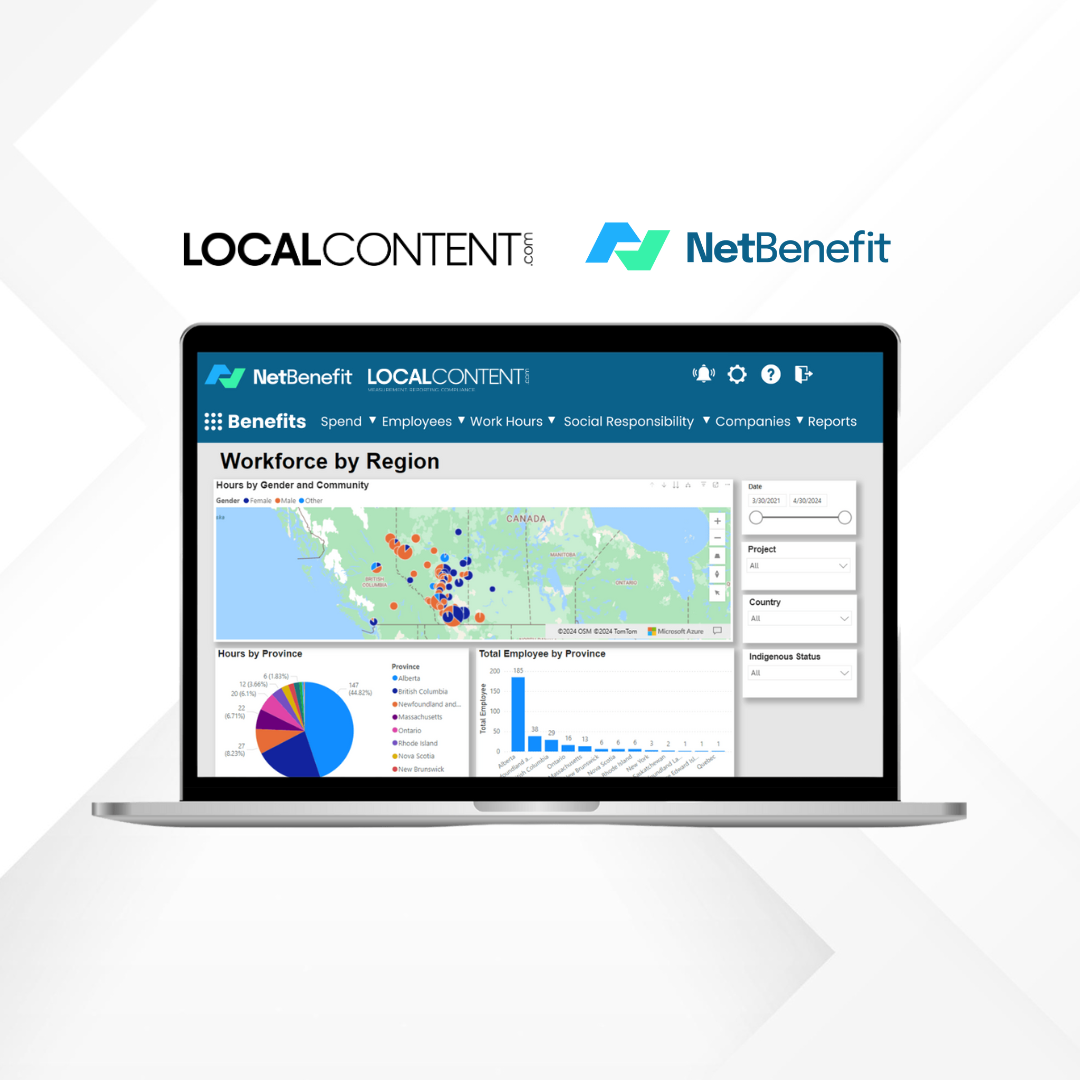New York, NY—New York City Economic Development Corporation (NYCEDC) published a first-ever study of the Blue Highways workforce, titled “NYC’s Working Waterfront: A Blueprint for Blue Highways,” to understand the labor force impacts of the City’s investments in the Blue Highways vision. Developed in collaboration with Accenture, Karp Strategies, and Sam Schwartz Engineering/TYLin, the report found that Blue Highways-related employment could grow by 72 percent in the next decade. This growth could create 8,000 net new jobs in New York City by 2035 for a total of 117,000 jobs across maritime, transportation, and logistics sectors. The findings of this study act as a blueprint for NYCEDC’s future investments in workforce development, providing underserved and underrepresented New Yorkers access to family-sustaining Blue Highways careers. These workforce investments will complement multiple Harbor of the Future projects, planned or underway, including the Downtown Skyport in Manhattan, the Hunts Point Marine Terminal in the Bronx, and the South Brooklyn Marine Terminal, Brooklyn Army Terminal, and Brooklyn Marine Terminal in Brooklyn.
“The Brooklyn Marine Terminal is a generational opportunity to build housing, a modern maritime facility, acres of open space and meaningfully advance the city’s Blue Highways strategy,” said Deputy Mayor for Housing, Economic Development, and Workforce Adolfo Carrión, Jr. “As today’s report—titled NYC’s Working Waterfront: A Blueprint for the Blue Highways—shows, the Adams administration’s strategy will create 117,000 good-paying jobs by 2035 and advance a model that gets trucks off our streets as part of a more sustainable model for moving freight across our city.”
“New York City’s Blue Highways are more than a transportation strategy—they’re a blueprint for inclusive economic growth,” said NYCEDC President & CEO Andrew Kimball. “This workforce assessment underscores our commitment to creating accessible, high-quality jobs for New Yorkers while building a more sustainable and resilient freight network. By investing in people as much as infrastructure, we’re ensuring that the Harbor of the Future delivers opportunity across every borough.”
The Blue Highways Workforce Study provides the first-ever definition and forecasting of New York City’s Blue Highways labor force through 2035. While macroeconomic factors such as tariffs or other trade policies might affect final outcomes, the report forecasts Blue Highways sectors could host as many as 117,000 jobs by 2035—up from 68,000 today. The report identifies 20 priority occupations essential to Blue Highways that will provide New Yorkers with good paying jobs and high career growth potential, most of which require only a high school diploma or no formal credential whatsoever.
The workforce study also includes 10 strategic recommendations to ensure all New Yorkers can seize opportunities in burgeoning Blue Highways industries:
- Develop a fund to scale existing training programs
- Establish a Blue Highways reservist corps
- Expand existing logistics curricula to include maritime applications
- Build a Blue Highways experiential learning center
- Launch a multi-stage Blue Highways career readiness program for NYCHA residents
- Develop a Blue Highways for Kids program
- Build a Blue Highways career pathways website
- Develop a Blue Highways Young Ports Association program
- Create a new International Longshoremen Association apprenticeship program
- Leverage the Workforce1 system to connect jobseekers to Blue Highways industries
The City’s Blue Highways Initiative aims to expand marine-based freight distribution and integrate it with innovative last-mile solutions. This approach is expected to significantly reduce truck congestion and create thousands of jobs, providing opportunities for economic mobility for New Yorkers from all backgrounds. In 2023, through the launch of the Blue Highways Request for Expressions of Interest, NYCEDC and the NYC Department of Transportation (NYCDOT), in collaboration with private sector partners, implemented pilot programs across the city to utilize marine terminals for freight movement and integrate sustainable last-mile delivery methods.
Building on the success of the pilot programs and the City’s sustained commitment to carry this vision to the future, NYCEDC has launched multiple Blue Highways projects:
- In April 2025, NYCEDC unveiled “Downtown Skyport,” a project that is upgrading the former Downtown Manhattan Heliport’s infrastructure for electric vertical take-off and landing (eVTOL) aircrafts, while also building out maritime freight berthing infrastructure to receive ferries with electric cargo bikes for last-mile deliveries in Lower Manhattan.
- Yesterday, Mayor Adams and NYCEDC announced that the city would remove the decommissioned Vernon C. Bain Center correctional barge from Hunts Point and unveiled a vision for a new Hunts Point Marine Terminal in its place. The Hunts Point Marine Terminal—which could create 400 construction jobs, 100 permanent jobs, and $3.9 billion in economic impact over the next 30 years—will form a key connection point between ports up and down the East Coast, including the Brooklyn Marine Terminal and other nodes in New York City.
- Additionally in Hunts Point, NYCEDC is creating a Blue Highways facility with Con Agg Global, set to begin operations this year, which will initially handle construction materials like natural sand and aggregate. Eventually, a permanent facility—currently seeking final sourcing and additional approvals—will handle more goods and is expected to remove approximately 1,000 truck trips per month in the South Bronx. The permanent facility will feature an inland standard barge with modular pier design to allow for rapid deployment, high capacity, and flexibility to adjust the design and layout based on evolving market demands for freight, including micro freight.
- NYCEDC is also finalizing a community-led plan to transform the 122-acre Brooklyn Marine Terminal into a modern, 21st-century maritime port and mixed-use community. In May 2024, Mayor Adams, along with New York Governor Kathy Hochul, NYCEDC, and the Port Authority of New York and New Jersey announced a historic agreement to redevelop the site. Since then, the project has secured a total of $358 million in public capital from City, State, and federal sources. The Brooklyn Marine Terminal redevelopment is expected to generate $21 billion in economic impact while potentially creating 39,000 temporary and 2,400 permanent jobs.
New York City is advancing a comprehensive strategy to modernize freight movement and create a more efficient, sustainable, and resilient delivery system. As part of this broader vision, the administration and NYC DOT has launched several key initiatives to reduce congestion, improve safety, and meet the growing demands of last-mile logistics, including:
- Expanding the use of pedal-assist cargo bikes—providing a safer, more sustainable alternative to traditional delivery trucks
- Launching LockerNYC to combat package theft and consolidate deliveries at secure, centralized pickup locations
- Rolling out the city’s first Microhubs on the Upper West Side, providing dedicated curb space to support the shift from trucks to cleaner delivery modes. Participating companies include Net Zero Logistics, UPS, and Amazon
- Implementing an Off-Hour Delivery program to encourage deliveries during non-peak hours, easing traffic congestion during the day
- Installing more than 3,000 new dedicated loading zones since 2022 to improve curb access and support more efficient deliveries across all five boroughs
Together, these efforts are transforming how goods move through New York City—prioritizing innovation, sustainability, and safety in the freight and delivery sector.
Today’s announcement builds on the Adams administration’s broader strategy to develop the Harbor of the Future—a reimagined network of innovation and growth across New York City’s waterways. The Harbor of the Future includes emerging innovation centers such as the newly announced climate innovation hub “BATWorks” at the Brooklyn Army Terminal in Sunset Park; the Hunts Point Produce Market in the Bronx; the country’s largest offshore wind port at the South Brooklyn Marine Terminal; a modern maritime port and vibrant mixed-use community hub at the Brooklyn Marine Terminal in Red Hook; the Science Park and Research Campus in Kips Bay in Manhattan; new sustainable housing and public space on the North Shore of Staten Island; and an anchor research and educational partner with the New York Climate Exchange on Governors Island. Additionally, today’s announcement fulfills a key commitment in Mayor Adams’ “Green Economy Action Plan,” a first-of-its-kind plan that lays out a roadmap to growing the city’s green economy, invests in jobs and sectors that help the city combat climate change, and positions New Yorkers to benefit from the nearly 400,000 projected green-collar jobs in New York City by 2040.
“Blue Highways are a direct path to a more sustainable future—one grounded in strategic investments in transportation infrastructure and expanded access to high-paying green jobs,” said NYC DOT Commissioner Ydanis Rodriguez. “These efforts will deliver real benefits to New Yorkers in every borough and opportunities for economic mobility. By advancing freight solutions and implementing innovative strategies to ease congestion, while meeting the needs of everyday New Yorkers, we can build a stronger, more resilient city.”
“The Blue Highways Workforce Assessment is a game changing roadmap to help position New Yorkers for career growth along with the City’s Blue Highways network,” said Doug Lipari, Acting Executive Director of the Mayor’s Office of Talent and Workforce Development. “This report identifies important training and workforce opportunities which will breakdown career barriers and ensure all New Yorkers can benefit from and contribute to the City’s growing Blue Highways network and green economy as a whole.”
“The Blue Highways Initiative is not just about transforming New York City’s infrastructure—it’s about transforming lives,” said Council Member Rafael Salamanca, 17th Council District, the Bronx. “By creating 8,000 new jobs in maritime, transportation, and logistics over the next decade, we’re opening doors to sustainable careers for thousands of New Yorkers, particularly those in underserved communities like mine, where the Hunts Point Marine Terminal will one day transform the local economy. With visionary projects like the Hunts Point Marine Terminal, a project that will once and for all remove the stain of the Vernon C. Bain Center on the South Bronx, we’re building a future where economic mobility, job growth, and environmental justice and sustainability go hand in hand.”
“The Blue Highways study is a critical step toward building a resilient, inclusive maritime economy that delivers both jobs and sustainability for New York’s working waterfront,” said Mike Stamatis, President and CEO, Red Hook Container Terminal. “I’m excited to see the maritime sector expand as the city grows the Blue Highways network—moving goods more efficiently while creating good-paying, accessible jobs for all New Yorkers.”
The Blue Highways Workforce Assessment lays out a bold and necessary vision for a more inclusive maritime economy,” said Furhana Husani, Director of Programs and Climate Initiatives, Waterfront Alliance. “At Waterfront Alliance, we’re especially encouraged by the focus on scaling training programs, launching a career readiness initiative for NYCHA residents, and creating new pathways for youth through experiential learning centers and apprenticeship programs. These investments not only honor our maritime past—they ensure that the next generation of New Yorkers can thrive in a resilient, equitable waterfront future.”
“The Blue Highways initiative is a visionary step towards an even more sustainable and economically vibrant future in New York City,” said Elena Boyd, Public Service New York Strategy and Consulting Lead, Accenture. “Through our collaboration, we have helped the City understand the labor force implications and identified key recommendations for workforce development, with a focus on local New Yorkers. By investing in workforce as a core part of its Harbor of the Future efforts, the City can drive innovation, create new job opportunities and foster inclusive growth, ensuring that underserved New Yorkers have access to emerging roles in the maritime, transportation and logistics sectors.”
“Well-designed transportation systems not only connect people to economic opportunity—they can be a source of good jobs themselves,” said TYLin (formerly Sam Schwartz Engineering) New York Sector Manager Mike Flynn. “Climate goals and equitable economic development goals go hand in hand. TYLin was proud to contribute to this groundbreaking strategy that will future-ready New York’s workforce for years to come.”
“Having spent more than twenty years working in economic development and planning across New York City—including deep work on our waterfront—I’ve seen how impactful it is when infrastructure projects are paired with thoughtful, long-term workforce strategies,” said Rebecca Karp, Founding Principal & CEO, Karp Strategies. “The Blue Highways Workforce Study offers a powerful opportunity not just to rethink how goods move through the city, but to build an ecosystem that connects people to the support they need to step into the maritime and transportation jobs of the future and grow the businesses that will take us there.”
“The success of the Blue Highways strategy depends on a skilled workforce ready to power a new era of transportation and goods movement,” said Cassandra Thomas, Principal, Karp Strategies. “This report lays out what it takes to build that foundation, identifying the gaps and the opportunities, and presenting New York City-specific recommendations tailored to our communities and our businesses. We’re proud to have worked with NYCEDC, Accenture, and TYLin to help provide a plan that aligns workforce development with the city’s bold infrastructure goals.”
“As the only CUNY institution offering maritime deckhand training, Kingsborough Community College is proud to be preparing New Yorkers for meaningful careers on the waterfront,” said Christine Zagari-LoPorto, Associate Dean of Workforce Development and Continuing Education, KCC. “The Blue Highways initiative reflects a powerful vision for a greener, more connected city—and we’re committed to ensuring that local residents are first in line for these good-paying, high-growth jobs. When we invest in workforce training, we’re not just preparing workers—we’re building stronger, more resilient communities.”
About NYCEDC
New York City Economic Development Corporation is a mission-driven, nonprofit organization that works for a vibrant, inclusive, and globally competitive economy for all New Yorkers. We take a comprehensive approach, through four main strategies: strengthen confidence in NYC as a great place to do business; grow innovative sectors with a focus on equity; build neighborhoods as places to live, learn, work, and play; and deliver sustainable infrastructure for communities and the city’s future economy. To learn more about what we do, visit us on Facebook, X, LinkedIn, and Instagram.








